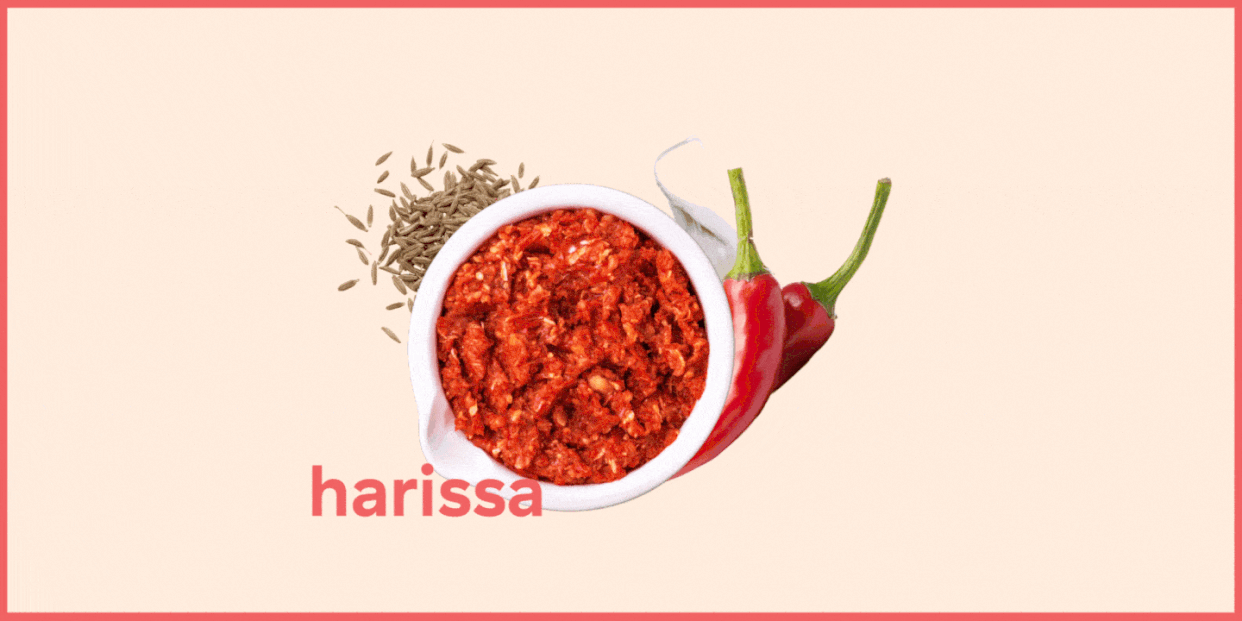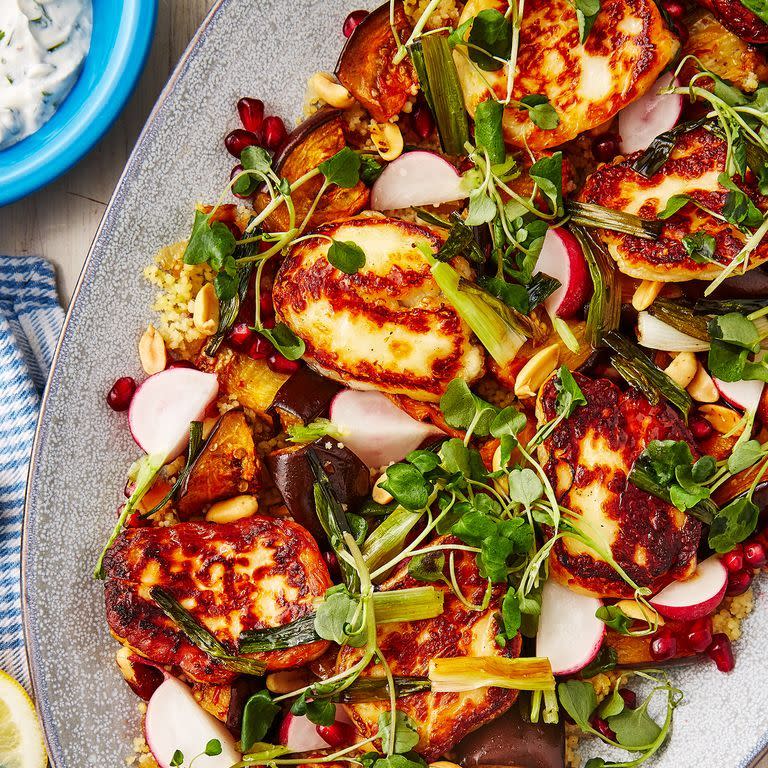This Is Why You Need Harissa In Your Store Cupboard

You know that feeling when something you’re cooking is missing a little chilli kick and general pizazz? Harissa is the answer to that.
A spicy, fragrant paste made from hot chilli peppers, garlic, olive oil and spices like cumin, caraway and coriander, it’s only been growing in popularity on social media, recipe books and in people’s kitchen cupboards.
What is harissa, and where does it come from?
Harissa is essentially the ketchup of North African and Middle Eastern cooking (except better) and it’s used widely as a condiment in countries like Morocco, Algeria, Libya, Israel and Tunisia. In fact, Tunisia is the world’s largest exporter of the stuff.
It’s usually sold in jars as a paste, but it can also be sold as a spice powder that you’d need to add oil and garlic to or it’s super easy to make at home.

You can do this by blending your choice of chillies, cumin seeds, coriander seeds, fresh garlic, lemon juice, tomato paste or roasted peppers and some smoked paprika if you like an extra layer of smokiness. Traditionally, the spices are toasted as whole seeds and then pounded in a pestle and mortar to release those lovely fragrances before adding the other ingredients, but you could also use a food processor or stick blender and jug in a pinch.
It's then left to stand for at least a couple of hours, if not days, to let the flavours properly marinate and really sing when you add the harissa to whatever you’re cooking.
Is harissa spicy?
In short, yes, harissa can be pretty fiery. It all depends on the types of chillies used to make it. If the chillies are milder, the resulting harissa paste will be less spicy, and if the chillies are the blow-your-head-off sort, the harissa will pack a lot more punch.
Some versions of harissa are made with rose petals (usually they’re labelled as “rose harissa”) and they carry an extra layer of fragrance that works well with intensely flavoured meat like lamb, or to brighten up crisp, jewelled salads or couscous-based side dishes.
Sounds tasty, so how do you use harissa?
Harissa is eaten in Tunisia as a dip for flatbreads with loads of olive oil, but it’s also great spooned over creamy hummus and eaten with crunchy veg, or as a salad dressing like in this Aubergine, Harissa and Halloumi Salad. It also works well as a marinade for meats like chicken, lamb or even turkey.

You could also coat vegetables in harissa and roast them in the oven like this Harissa Hasselback Butternut Squash or add a spoonful to stews or soups for an extra hot kick and depth of flavour. It’s brilliant stirred into mayo for a sarnie or falafel wrap or dolloped on to fried eggs on toast for a breakfast that’s got a bit of something about it.
Are there any alternatives to harissa?
Nothing’s going to quite replace the blend of spices and chillies in harissa paste, but if you’re adding it to a dish to add heat then you could use an ordinary chilli paste, and if you were after some smokiness, you could try smoked paprika instead.


